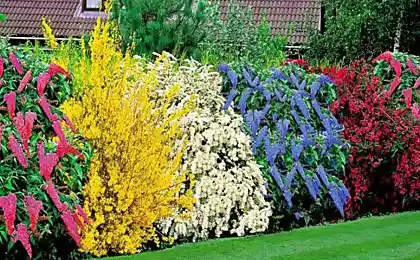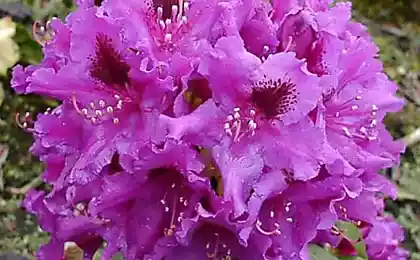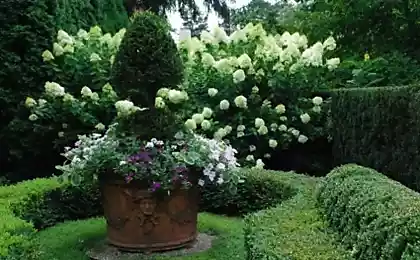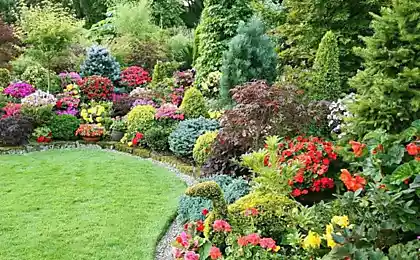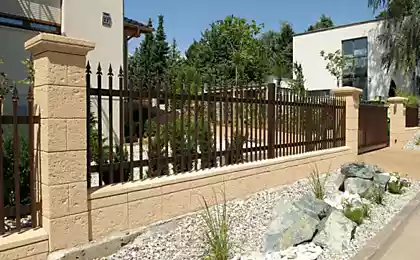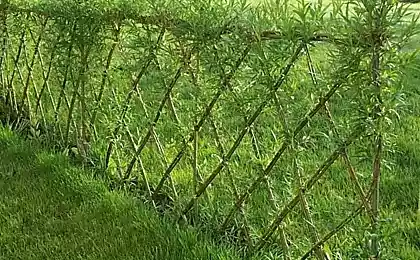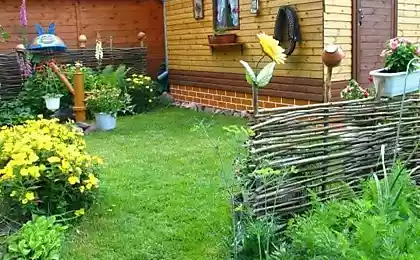557
A hedge of shrubs with their hands
Hedge is great protection from the noise outside from the wind and prying eyes. Many people like to rest in a closed space that is formed behind walls and fences and in the open, created by a hedge.
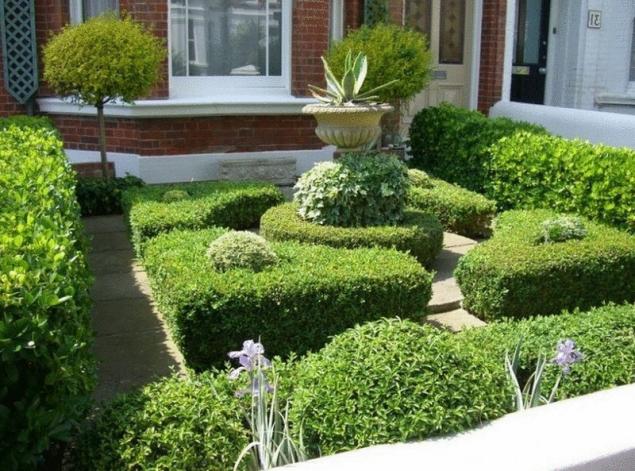
Before you start planting, you will have to figure out some things. If on the line, where it will grow the hedge, the shadow, you can select one of plants such as yew, boxwood, barberry or dogwood. The acidity of the soil is also of great importance is to slightly feel good of coniferous plants, and the average will prefer hawthorn, will Ligustrum, Berberis, cotoneaster. The width of the fence when correct and timely pruning of plants may be only 30-40 cm, therefore for a wide hedge bushes are planted in 2-3 rows. Plants for hedges can be of different heights, low, meter, grow spirea, barberry, boxwood. Average height of 1-2 m have the physocarpus, hawthorn, compendium, hazel, Privet, Jasmine and lilac.
To make a hedge of evergreen will help juniper, arborvitae, spruce and yew, you can add the Euonymus, boxwood and barberry. The coniferous plants are resistant to polluted air and unable to die, a leafy plant in this respect is stronger. The most resistant of the conifers – arborvitae, Austrian pine or European larch that in winter the needle drops. All conifers grow slowly, so if you need a fast growing hedge, it is better to alternate them with deciduous trees. Protect from uninvited guests the bushes, with large needle – sea buckthorn, sloe, wild rose, honey locust, barberry and hawthorn.
Before planting the soil need to prepare, remove weeds, dig up the soil and enrich it with compost. Planting a hedge is better in early spring or late autumn, each plant is preferable to plant in a separate hole. For a smooth landing draw the line twine or string, along which it creates a hedge. The classic hedge consists of a single row, and a wide and dense of the two, where the plants are planted in a staggered manner. Further planting will require constant attention and perform service activities such as weeding, watering, pruning, fertilizing. Fertilize the soil not only after planting, but throughout the year as well-chosen minerals in the right doses helps the plants to take root and accelerate their growth. Usually feeding is carried out 3-4 times per year, in active growth period from may to August. Fertilizer is applied to soils with sufficient amounts of water. If the year was dry, the hedges need to be watered on a par with vegetable gardens and flower beds. Water should be supplied evenly, gently flow around each plant individually.
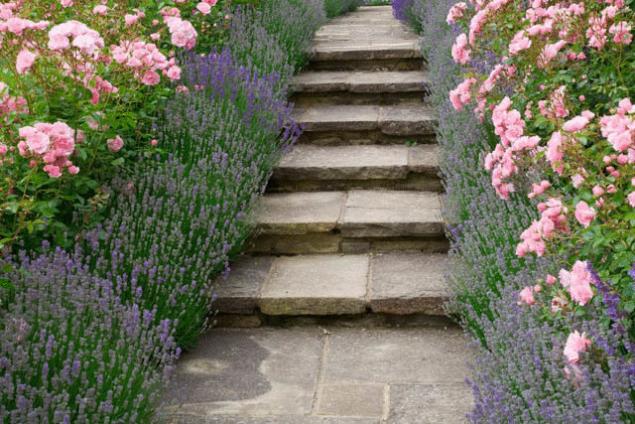
Branches sticking out in the hedge look very untidy in any form – rounded, straight or curly. The pruning tools should be clean, sharp, pruning is carried out exclusively in cloudy weather. The first cut is made low, 10-20 cm above the ground. Conifer hedge trimmed 2-3 times a year, reducing first cutting all the stems to 1/3 of the length, and the pine and spruce trees cut in late winter before they begin to fabricate the resin. The second crop is 10 cm in July and autumn, not later than September, cut the foliage. When conifers grow on the scheduled length, cut them to 5 cm
Pruning is well tolerated arborvitae and juniper, and the Eastern Hemlock tree. They're known as the fastest growing conifers. Deciduous hedgerows soon after planting, forming, cutting at 20 cm regardless of the original length. Thus, plants can acquire the desired thickness. The second crop, the following year, shortens the plants at 30 cm, and all subsequent years of 10-15 cm It helps to make the plants not as tall and more dense.
P. S. And remember, only by changing their consumption — together we change the world! ©
Source: domashniy.ru/

Before you start planting, you will have to figure out some things. If on the line, where it will grow the hedge, the shadow, you can select one of plants such as yew, boxwood, barberry or dogwood. The acidity of the soil is also of great importance is to slightly feel good of coniferous plants, and the average will prefer hawthorn, will Ligustrum, Berberis, cotoneaster. The width of the fence when correct and timely pruning of plants may be only 30-40 cm, therefore for a wide hedge bushes are planted in 2-3 rows. Plants for hedges can be of different heights, low, meter, grow spirea, barberry, boxwood. Average height of 1-2 m have the physocarpus, hawthorn, compendium, hazel, Privet, Jasmine and lilac.
To make a hedge of evergreen will help juniper, arborvitae, spruce and yew, you can add the Euonymus, boxwood and barberry. The coniferous plants are resistant to polluted air and unable to die, a leafy plant in this respect is stronger. The most resistant of the conifers – arborvitae, Austrian pine or European larch that in winter the needle drops. All conifers grow slowly, so if you need a fast growing hedge, it is better to alternate them with deciduous trees. Protect from uninvited guests the bushes, with large needle – sea buckthorn, sloe, wild rose, honey locust, barberry and hawthorn.
Before planting the soil need to prepare, remove weeds, dig up the soil and enrich it with compost. Planting a hedge is better in early spring or late autumn, each plant is preferable to plant in a separate hole. For a smooth landing draw the line twine or string, along which it creates a hedge. The classic hedge consists of a single row, and a wide and dense of the two, where the plants are planted in a staggered manner. Further planting will require constant attention and perform service activities such as weeding, watering, pruning, fertilizing. Fertilize the soil not only after planting, but throughout the year as well-chosen minerals in the right doses helps the plants to take root and accelerate their growth. Usually feeding is carried out 3-4 times per year, in active growth period from may to August. Fertilizer is applied to soils with sufficient amounts of water. If the year was dry, the hedges need to be watered on a par with vegetable gardens and flower beds. Water should be supplied evenly, gently flow around each plant individually.

Branches sticking out in the hedge look very untidy in any form – rounded, straight or curly. The pruning tools should be clean, sharp, pruning is carried out exclusively in cloudy weather. The first cut is made low, 10-20 cm above the ground. Conifer hedge trimmed 2-3 times a year, reducing first cutting all the stems to 1/3 of the length, and the pine and spruce trees cut in late winter before they begin to fabricate the resin. The second crop is 10 cm in July and autumn, not later than September, cut the foliage. When conifers grow on the scheduled length, cut them to 5 cm
Pruning is well tolerated arborvitae and juniper, and the Eastern Hemlock tree. They're known as the fastest growing conifers. Deciduous hedgerows soon after planting, forming, cutting at 20 cm regardless of the original length. Thus, plants can acquire the desired thickness. The second crop, the following year, shortens the plants at 30 cm, and all subsequent years of 10-15 cm It helps to make the plants not as tall and more dense.
P. S. And remember, only by changing their consumption — together we change the world! ©
Source: domashniy.ru/
